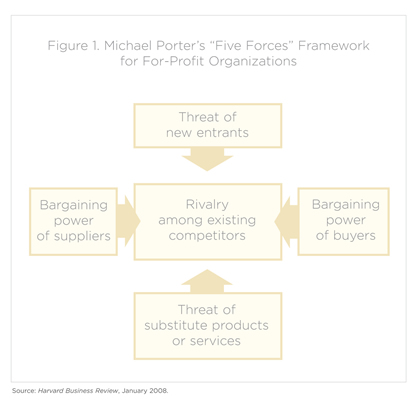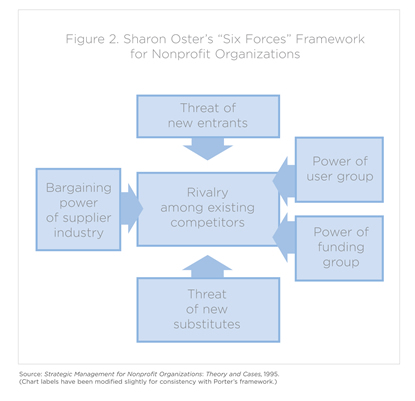Entrepreneurs who own microenterprises, or businesses with five or fewer employees, often have limited access to mainstream financing. They may find it beneficial to work with nonprofit entities called microenterprise development organizations (MDOs) that specialize in helping build the capacity of very small businesses. MDOs provide one or more of the following services: training and technical assistance, credit and access to credit, access to market services for microentrepreneurs, and financial education and asset development.
The MDO field in the U.S emerged in the mid-1980s, starting with a handful of entities.1/ Today, there are about 500 MDOs in operation in the U.S. In recent years, MDOs have faced increasing competition as more and more public agencies and for-profit organizations begin providing loans and services to microenterprises. To sustain themselves as a field, MDOs must understand the economic and political market in which they operate. They must also implement strategic management methods that recognize the multiple pressures affecting their industry.2/
A rich field of research on management methods for nonprofits has developed in the last several decades. Many of the methods are adapted from principles used in the private sector. One prominent example is the "Six Forces" framework, which author Sharon Oster proposed in her 1995 book Strategic Management for Nonprofit Organizations: Theory and Cases. Oster's approach is adapted from a framework for private-sector industry analysis and business strategy that Michael Porter of Harvard University developed in 1979. Porter's framework, known as "Five Forces," uses concepts developed in industrial organization economics to derive five forces that determine the competitive intensity and, therefore, the attractiveness of a market.3/
Porter's original Five Forces framework and Oster's Six Forces adaptation are illustrated in Figures 1 and 2, respectively. What happens when we apply one of these frameworks to MDOs? As described below, when we view the MDO market using the appropriate framework—in this case, Oster's Six Forces framework for nonprofits—a clearer picture of the market emerges. The results can provide decision makers in the field with techniques for improving their operations and achieving sustainability.


Six Forces for MDOs
Force 1: Relations among existing organizations
Assessing the number, capacity, and interactions of existing MDOs
For the 500 or so MDOs currently serving the U.S. market, the level of competition is growing. Many MDOs have limited capacity and provide similar products and services, resulting in duplicated efforts across the field and an inability to take advantage of economies of scale.4/ For example, most MDOs have developed their own training curricula and systems for data tracking and loan documentation. In the city of Minneapolis alone, there are more than a dozen different programs providing some type of assistance to potential entrepreneurs,5/ perhaps vying for the same funding dollars and the same clientele. In this case, one MDO's gain is often another's loss, because it drives down other MDOs' ability to recover program-related expenses.
The rivalry is intensified by the fact that most MDOs, if not all, have goals that go beyond their individual economic performance. As previously noted, MDO programs are formed to provide and promote access to capital for low-income populations and underserved communities. For this reason, MDOs often display a strong commitment to continue running certain programs, despite the poor economic performances of those programs.
Force 2: Threat of new entrants
Assessing the ability of new organizations to enter and compete effectively in the field
In general, upstart nonprofit entities are not a major threat to established MDOs, due to the industry's substantial entry barriers. Oster defines entry barriers in the nonprofit sector as any phenomenon that prevents new organizations from entering and serving the market while remaining economically viable. To be economically viable, a nonprofit organization should be able to generate fees from revenues, grants, or donations while accomplishing its goals and objectives.
There are two major barriers to entry in the microenterprise development field. The first is reputation. The vast majority of MDOs depend heavily on subsidies from government and philanthropic institutions. These donors are more likely to trust and fund existing organizations with proven track records than new, unproven organizations. The importance of reputation is growing, because public funding for MDOs is on the decline. For example, funding for the U.S. Small Business Administration's Program for Investment in Microentrepreneurs dropped from $15 million in 2001 to $3 million in 2008. In addition, a growing number of philanthropic institutions that historically funded MDOs are now questioning the MDO industry's ability to measure the impact of its work. These trends in public and philanthropic funding make it more challenging for newcomers to attract resources away from established, reputable MDOs.
The second major entry barrier in the MDO industry is cost recovery, or the capacity of an organization to pay its expenses with revenues generated by its own programs. Cost recovery rates for MDOs vary. For example, some MDOs that specialize in lending had an average recovery rate of 47 percent in 2003, whereas in the same fiscal year, training-led programs documented an average rate of 6 percent. The highest cost recovery rates were 60 percent and 89.5 percent, respectively, for credit-led and training-led programs.6/ Generally speaking, MDOs with established, revenue-generating programs have higher cost-recovery rates than newer organizations. Start-up MDOs must invest heavily in building their programs. These early costs are difficult to recover, and they create a competitive disadvantage for new organizations.
Force 3: Threat of new substitutes
Assessing the ability of MDO clients to find a different product that can meet their needs.
When the competitive threat posed by substitute products or services is high, it becomes more challenging for organizations to charge fees for their products or services and secure enough funding to cover their costs. What are some substitute products in the case of an MDO? Clearly, microloans, credit cards, and other products and services offered by for-profit entities compete with the products MDOs offer. Banks and other for-profit financial service providers use credit scoring to serve riskier borrowers—a market segment traditionally served by nonprofit lenders. Credit cards appear to be an effective product for banks and other lenders in serving "marginal" small business borrowers. The application process for credit cards is faster and less exhaustive than the process for small business loans. For these and other reasons, increasing numbers of small business borrowers are choosing credit cards as a financing avenue. According to a Federal Reserve study, the share of small businesses that used business credit cards as a source of credit jumped from 34 percent in 1998 to 48 percent in 2003.7/
Banks, finance companies, and other for-profit organizations are also beginning to offer training and technical assistance to entrepreneurs. For instance, eBay, Verizon, and American Express provide online business education to their customers.8/ Indeed, as people continue to show a preference for convenience or simplicity over price, MDOs will find it more challenging to attract and efficiently serve them.
Forces 4 and 5: The power of users and donors
Assessing a) the ability of users to drive up costs and b) the challenges fundraising presents
MDOs typically focus on entrepreneurs who are underserved by mainstream commercial lenders. So for MDOs, users include a high proportion of low-income individuals, ethnic and racial minorities, women, individuals with disabilities, and new immigrants. Since substitutes for the services offered by MDOs are available, MDO users have significant market power. MDO clients continue to demand more and better services and, consequently, drive up the costs of creating and delivering those services. That means it is essential for MDOs to understand their users and examine the individual needs of each segment of this market. Services traditionally offered by MDOs (e.g., business development, technical assistance, and access to small business loans) may no longer respond effectively to customers' needs.
Donors constitute a second group with significant market power. MDOs have little power relative to their major donors, who can change their priorities and funding guidelines as they wish. MDO advocacy groups, such as the Association for Enterprise Opportunity, recommend the development of performance-based grantmaking systems that would standardize funding criteria across the industry. However, MDOs and donors have shown little or no inclination to accept and adopt any industry-standard measures.
Force 6: Bargaining power of suppliers
Assessing how the labor supply affects the capacity of MDOs
Dedicated, knowledgeable employees are a nonprofit organization's greatest resource. Therefore, fluctuations in the labor supply are a concern for most nonprofits. To stay competitive, MDOs must attract high-quality employees. However, it is difficult for MDOs to find the resources necessary to hire and retain skilled staff, so turnover and staff development are a common challenge. The 2007 Minnesota Nonprofit Economy Report released by the Minnesota Council of Nonprofits shows that Minnesota nonprofits paid $10.8 billion in wages in 2006, about 42 percent of total expenditures. On average, a typical charitable organization spends one-half of its operating expenses on labor. The picture is no different for MDOs.
A tool for leaders in the industry
In applying Oster's Six Forces framework to the MDO industry, we begin to see a fuller picture of the challenges MDOs face and how those challenges might affect the industry's long-term sustainability. Identifying the specific competitive forces that affect MDOs can help the leaders of these organizations perform SWOT (strengths, weaknesses, opportunities, and threats) analyses, develop better strategies, exploit changes in the industry, and gain a competitive edge. If all of the leaders of MDOs examined the market using the Six Forces framework or a comparable management method, the industry might be better equipped to confront its various challenges, avoid duplication of services, and benefit from economies of scale.
1/ For more information on the current state of the microenterprise field in the U.S., see the article "Microenterprise development in the U.S.: Past, present, and future" in Community Dividend, Issue No 2, 2007.
2/ This point is reinforced in Pump Up the Volume: Strategies for Reaching Scale in the U.S., which is published by the Association for Enterprise Opportunity, a trade association of microenterprise programs.
3/ "The Five Competitive Forces that Shape Strategy," Harvard Business Review, January 2008.
4/ In general, the term "economies of scale" refers to changes in average unit costs that are related to changes in scale or size of an organization. Due to economies of scale, large organizations have greater access to markets and can operate with broader geographic reach than small organizations.
5/ Starting a Business in Minneapolis: A Practical Guide, City of Minneapolis Community Planning and Economic Development Department, 2007.
6/ Elaine Edgcomb and Joyce Klein, Opening Opportunities, Building Ownership: Fulfilling the Promise of Microenterprise in the United States, The Aspen Institute, 2005.
7/ The 1998 and 2003 Survey of Small Business Finances, Board of Governors of the Federal Reserve System.
8/ Supply-Side Scan of Microenterprise Financing, The Aspen Institute Microenterprise Fund for Innovation, Effectiveness, Learning and Dissemination, October 2005.
Michou Kokodoko is a senior policy analyst in the Minneapolis Fed’s Community Development and Engagement department. He leads the Bank’s efforts to promote effective community-bank partnerships by increasing awareness of community development trends and investment opportunities, especially those related to the Community Reinvestment Act.





